Autism Young Adults


Understanding Autism Beyond Childhood
Autism spectrum disorder (ASD) is often associated with childhood, but its impacts and manifestations extend into young adulthood. As individuals with autism grow, their needs, abilities, and challenges evolve, necessitating a comprehensive understanding of how autism presents and how community, healthcare, and educational systems can better support them through this critical life stage.
Early Signs and Diagnosis in Young Adults
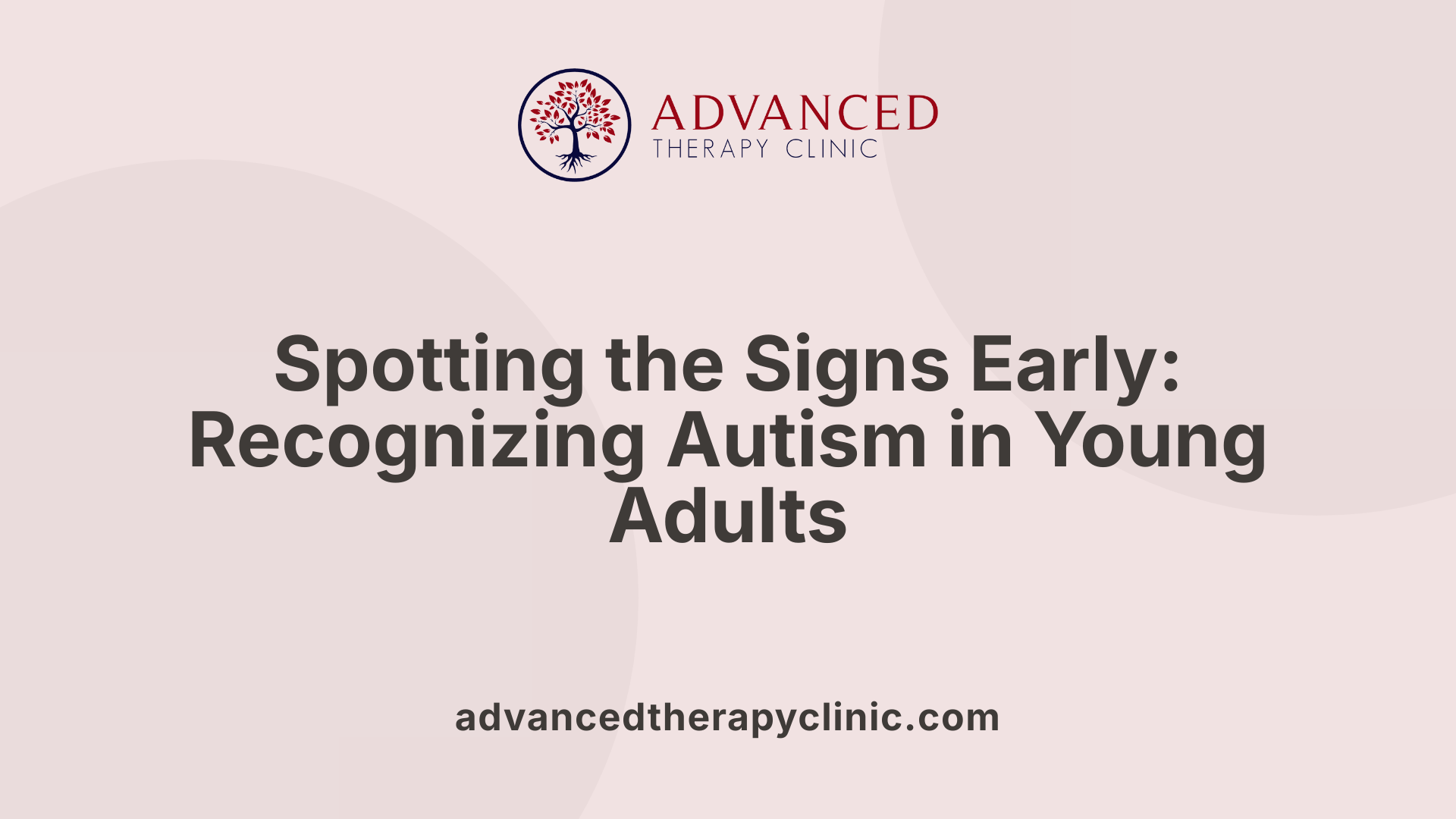
What are the signs of autism in a young adult?
Signs of autism in a young adult can manifest in various ways, reflecting differences in social interaction, communication, behaviors, and sensory experiences. These individuals may find it difficult to understand what others are thinking or feeling, which can lead to social anxiety or discomfort. Many prefer solitude or experience challenges in forming and maintaining friendships.
Autistic young adults might speak bluntly or seem uninterested in social conversations, not out of rudeness but due to difficulties in processing social cues. They often have trouble expressing their emotions and may interpret language literally, struggling with idioms, sarcasm, or jokes. An intense interest in specific topics, routines, or repetitive behaviors such as hand-flapping or arranging objects in a particular order are common.
Sensory sensitivities are also prevalent, including hypersensitivity to sounds, lights, or textures, which can cause discomfort or overwhelm. Visible signs include avoiding eye contact, fussiness when touched, or reacting strongly to sensory input. Understanding that autism exists on a spectrum is important, as individuals vary widely in how prominently these signs display.
What are the symptoms of autism in adults?
In adulthood, autism symptoms often include challenges in social communication, such as difficulty understanding social cues, making friends, or engaging in typical social interactions. Many adults report feeling awkward in conversations, having trouble reading facial expressions, or understanding others’ perspectives.
Restricted and repetitive behaviors remain characteristic, manifested through adherence to routines, repetitive movements like rocking or hand-flapping, and having highly focused interests. Sensory sensitivities can persist, with some adults finding certain noises, lights, or textures especially distressing.
Communication challenges may include speaking in a monotone, making blunt responses, or struggles in expressing feelings. Many autistic adults also mask their symptoms by camouflaging behaviors, which can lead to stress and burnout but sometimes delays diagnosis.
What are the main symptoms of autism in adults?
The core adult symptoms include difficulties with social interaction and communication, such as trouble with eye contact, understanding social norms, and making or sustaining friendships. Repetitive behaviors, strict routines, and intense interests are common.
Sensory issues like hypersensitivity or hyposensitivity to stimuli are frequent. Adults might experience anxiety or depression more often, partly due to social isolation or masking stress. Many try to hide their autistic traits to blend in, which can lead to feelings of exhaustion and emotional distress.
What are the signs of autism in adult females?
Signs of autism in women can be more subtle compared to men, often due to masking behaviors. Females may develop social coping strategies, such as mimicking peers or creating scripts for interactions, which can hide their difficulties.
They might experience intense sensory sensitivities, obsessive interests, and executive functioning challenges. Many women with autism have internalized symptoms like anxiety or depression, and their social difficulties often go unnoticed or are diagnosed later. Recognizing these subtler signs is crucial for accurate diagnosis and support.
Are adults able to have mild autism or high-functioning autism?
Yes, many adults exhibit milder forms of autism or are considered high-functioning. They may have learned to mask or compensate for their challenges and lead independent lives. Despite fewer apparent difficulties, they often face ongoing hurdles in social interactions, employment, and daily living.
Early diagnosis can help these individuals access tailored support services, improve self-understanding, and foster acceptance. Their symptoms can include social communication difficulties, restricted interests, and sensory sensitivities, but they may not be immediately obvious, especially if the individual has developed effective coping strategies.
What is the life expectancy of a person with autism?
The life expectancy for individuals with autism varies widely, influenced by support levels, co-occurring health conditions, and access to healthcare. On average, estimates suggest that autistic individuals live between 39 to 58 years, which is shorter than the general population.
Certain factors, such as the severity of autism, associated medical issues (like epilepsy), and socioeconomic status, impact lifespan. Nonetheless, with early intervention and comprehensive healthcare, many can enjoy long, fulfilling lives. Recent studies in the UK report life expectancy ranges for men at 72–75 years, and women at 70–77 years, indicating improvements and variability across regions.
Understanding these signs and diagnostic processes helps in early identification and support, enabling better health, social integration, and quality of life for young adults on the autism spectrum.
Transition Challenges and Support Systems
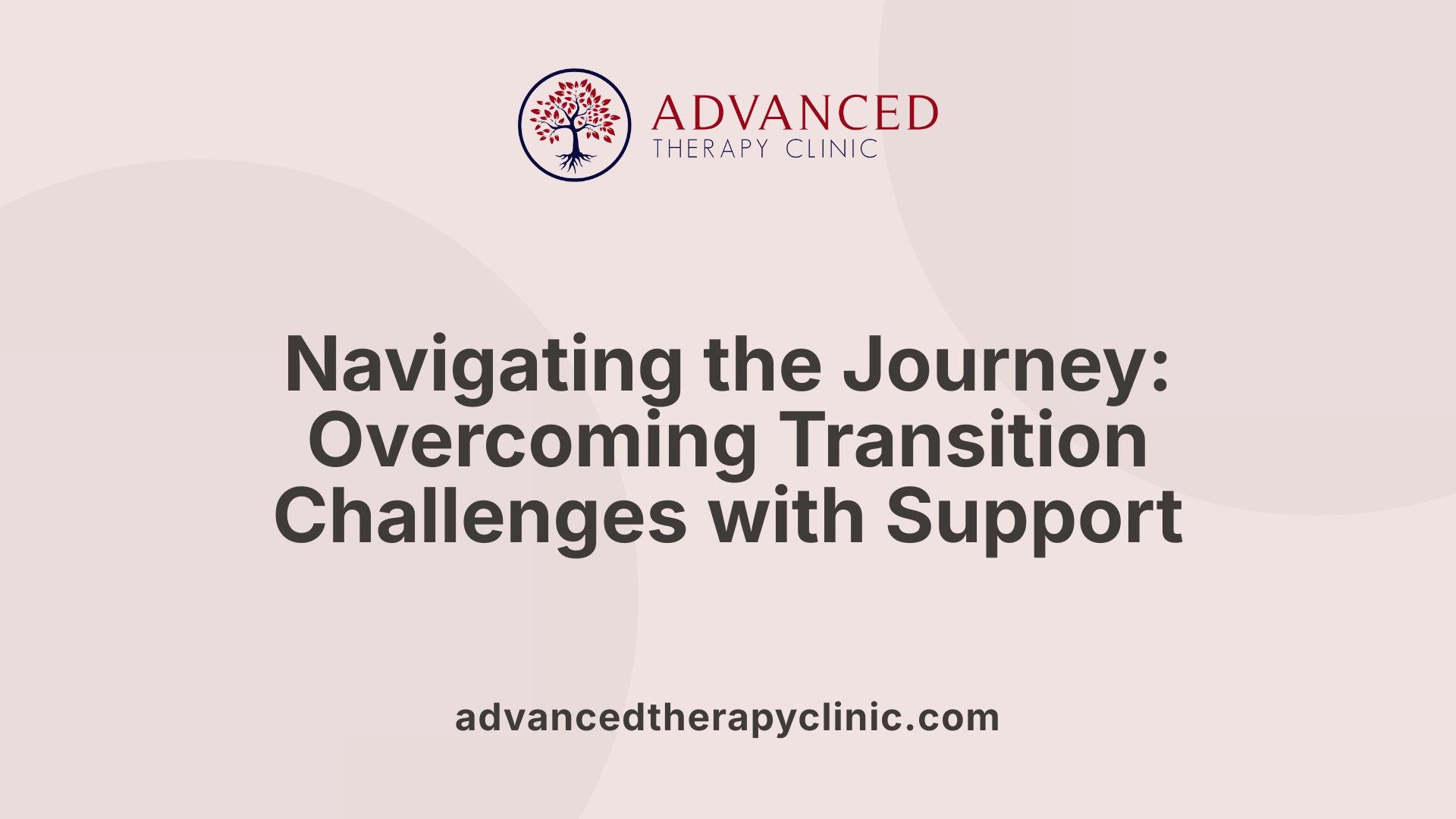
What are the challenges faced by young adults with autism?
Young adults with autism often encounter significant hurdles as they move from adolescence into adulthood. One major challenge is gaining employment; studies show that less than 60% are employed, and less than 20% work full-time, earning around $8 per hour. Pursuing higher education is also difficult for many, with only about one-third of high school graduates with ASD attending college.
Participation in social activities poses another obstacle. Many face social isolation due to difficulties understanding social cues, retaining friendships, and navigating social norms. A significant factor worsening these issues is the 'services cliff'—a term describing the abrupt reduction of support services upon high school graduation. Post-high school, therapies such as speech, occupational, and social skills training often decrease or cease, which can stall or reverse even the gains made during school years.
Many young adults with autism live with their families because of challenges in independent living. They struggle with daily tasks like hygiene, transportation, shopping, and meal preparation, which are crucial for autonomy. The limited availability of community engagement opportunities, employment, and supportive housing underscores the need for better transition planning and ongoing support systems to help these individuals achieve greater independence and community participation.
How can transition planning improve outcomes for autistic youth?
Starting around age 16, comprehensive transition planning becomes vital. This process involves developing a personalized approach that covers educational pathways, vocational training, and social skills enhancement. It requires coordination among families, educators, healthcare providers, and community resources to ensure that young adults are equipped with the skills necessary for adult life.
Effective planning focuses on building organization, self-advocacy, and independence—skills necessary to navigate healthcare services, employment, and social settings. Programs like Project SEARCH provide work experience opportunities that increase employability, while college internship programs help build academic and social skills. Transition planning aims to mitigate the impact of the 'services cliff' by establishing support networks that continue beyond high school.
Moreover, early preparation involves teaching daily living skills such as safety awareness, self-care, and decision-making, which are important for independent living. Providing access to legal and medical planning resources—like understanding guardianship options—also plays a critical role in empowering young adults with autism. Ultimately, thorough transition planning enhances their ability to participate fully in community life, reduces reliance on family, and fosters a sense of independence.
What community and technological resources support young adults with autism?
A range of community and technological resources are available to support young adults on the autism spectrum. Community programs, such as the Itineris vocational support, focus on helping young people gain employment and develop social skills in inclusive environments.
Online and technological tools are increasingly being utilized to aid social skill development. Virtual reality (VR) is emerging as an effective method for teaching complex social interactions, including dating and job interviews, in a safe and controlled setting. Additionally, online resources and toolkits provide valuable information for understanding autism-related challenges, managing healthcare, and advocating for oneself.
Transition toolkits help with planning for medical care, legal rights, and supported decision-making—essential aspects of adult independence. Educational platforms offer courses on life skills, employment rights, and community resources, empowering young adults to navigate their adult lives confidently. Peer support groups and social clubs, often inclusive of people on the spectrum, can foster meaningful friendships and social inclusion.
What are the implications of the 'services cliff' phenomenon post-high school?
The 'services cliff' signifies a critical issue—upon graduating high school, many autistic individuals face a dramatic reduction in available support services. Previously, during school years, they often received therapies like speech, occupational, and social skills training that contributed to their development.
Once out of high school, these essential services often diminish or stop altogether due to funding gaps and different service eligibility criteria for adults. This sudden cutback can cause stagnation or regression in social, employment, and daily living skills. Families may need to seek alternative supports, such as private therapy without insurance coverage or community-based programs with limited availability.
The consequences include increased social isolation, difficulty maintaining progress made during school years, and a higher reliance on family caregivers. Furthermore, the lack of ongoing structured support can lead to higher rates of unemployment, underemployment, and reduced quality of life.
Addressing this issue requires policy changes to extend supports into adulthood, developing community-based resources that provide continuous assistance. Ensuring smoother transitions and sustained support can help prevent the adverse effects of the 'services cliff,' allowing autistic adults to lead more independent and fulfilling lives.
| Aspect | Challenges/Support | Details |
|---|---|---|
| Employment | Low employment rates | Less than 60% employed; under 20% in full-time jobs |
| Education | Limited college attendance | About one-third attend college post-high school |
| Social Activities | Social isolation | Difficulty forming and maintaining friendships |
| Transition Support | Abrupt service reduction | 'Services cliff' leads to stagnation |
| Community Resources | Scarcity of ongoing support | Need for expanded community and policy initiatives |
| Technology | Use of VR and online tools | Innovative aids for social skills and planning |
| Family Role | Housing and support | Many live with families due to independence challenges |
| Policy Implication | Need for adult support | Extending services and funding beyond high school |
This comprehensive understanding highlights the multifaceted challenges faced by young adults with autism and underscores the importance of seamless transition planning and ongoing support systems to facilitate successful adult lives.
Developmental Strengths and Needs
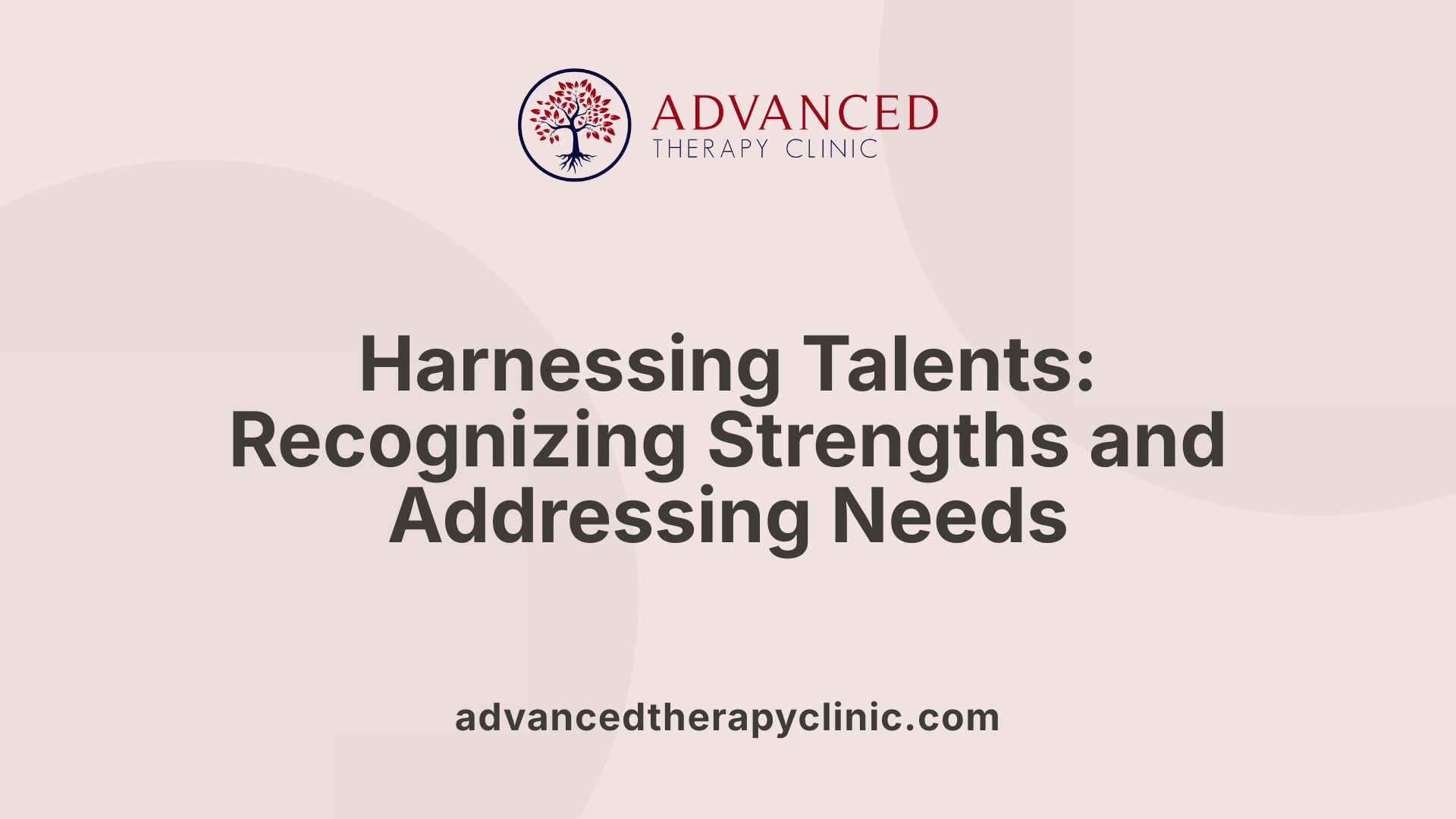
What are developmental aspects and strengths of young adults with autism?
Young adults with autism often possess distinctive developmental strengths alongside their challenges. Many demonstrate exceptional attention to detail, a strong memory, and proficiency in tasks requiring routine or repetition. Their intense interests frequently lead to expertise in specialized fields like mathematics, art, or music. These capabilities can translate into success in niche careers or academic pursuits, especially when supported by tailored learning opportunities.
Understanding these strengths allows families, educators, and clinicians to design strategies that encourage confidence and foster independence. For instance, leveraging a young adult’s focused interests can motivate engagement in vocational training or higher education.
However, they also have unique needs. These include developing social skills, adaptive daily living skills, and emotional regulation. Support often involves targeted interventions such as social skills therapy, life skills training, and emotional coping strategies. Addressing both strengths and needs holistically promotes better community participation and improves overall quality of life.
Why is understanding individual developmental needs important?
Recognizing the personal strengths and requirements of young adults with autism is essential for crafting effective, individualized support plans. Personalized approaches increase the likelihood that these young adults will reach their full potential, develop meaningful independence, and achieve life goals.
This understanding helps tailor interventions to fit each individual’s communication styles, sensory sensitivities, and learning preferences. For example, some might benefit from visual schedules or sensory accommodations, while others thrive with structured social practice.
Focusing on individual talents and difficulties reduces frustration and prevents mismatched expectations, offering a strengths-based perspective that fosters positive self-identity. Educational programs, therapeutic services, and employment opportunities become more effective when designed around a nuanced understanding of each young adult’s unique developmental profile.
Developmental aspects unique to young adults with autism
| Aspect | Description | Supporting Strategies |
|---|---|---|
| Attention to detail | Tendency to notice small details others overlook. | Use in vocational training, like quality control or research. |
| Repetitive routines | Preference for routines and familiarity. | Gradual introduction to new routines, using visual supports. |
| Intense interests | Deep focus on specific topics. | Incorporate into learning, partnerships, or career development. |
| Social skills challenges | Difficulties in understanding social cues and norms. | Social skills groups, peer mentoring, targeted therapy. |
| Adaptive living skills | Skills for daily independence, including hygiene, transportation, and shopping. | Life skills programs, real-world practice, step-by-step teaching. |
| Emotional regulation | Managing anxiety, frustration, or overwhelm. | Counseling, mindfulness, stress management techniques. |
| Sensory processing differences | Sensitivity or insensitivity to sensory stimuli. | Sensory accommodations at home and in community settings. |
| Communication styles | Variability in verbal and non-verbal communication abilities. | Speech therapy, alternative communication aids. |
Supporting Data Summary
| Topic | Data/Insight | Implication |
|---|---|---|
| Strengths in detail and memory | Many young adults excel in highly specific fields. | Opportunity for specialized career paths. |
| Unique developmental needs | Skills like daily living often require explicit teaching. | Need for tailored, practical training programs. |
| Importance of individualized plans | Personalized support enhances participation and independence. | Emphasizes the importance of customized interventions. |
Developing a nuanced understanding of the diverse developmental aspects of young adults with autism allows for more effective support systems. Recognizing their unique talents and challenges not only promotes independence but also helps them thrive in adult life.
Supporting Relationships and Social Inclusion
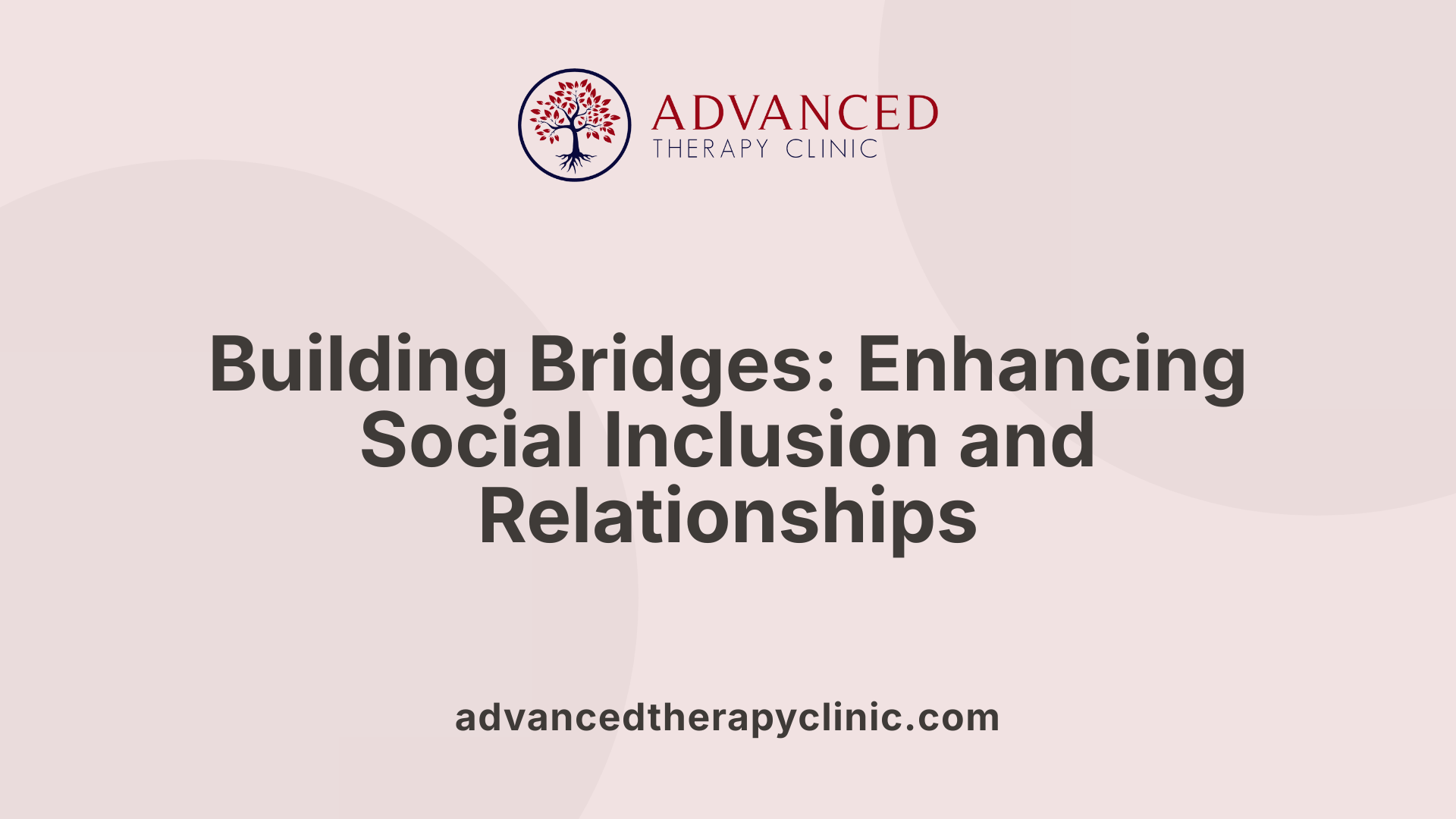
What are the social and relationship challenges faced by autistic young adults?
Autistic young adults often face significant hurdles in developing and sustaining friendships. Difficulties in social communication, understanding subtle social cues, and navigating social norms can make interactions stressful or confusing. These challenges sometimes lead to feelings of loneliness and social isolation, even when there is a strong desire for connection.
Many young adults on the spectrum use masking behaviors—adapting their outward behaviors to fit social expectations—which can be exhausting and sometimes mask true feelings and difficulties. However, they often find common ground and form bonds through shared interests like gaming, arts, or technology.
Creating inclusive environments is vital. Peer groups and social activities designed with neurodiversity in mind offer safe spaces for interaction. Recognizing individual differences, fostering patience, and encouraging authentic engagement help improve social inclusion. Simple steps such as promoting acceptance of diversity and supporting social skills in a supportive setting can greatly enhance opportunities for meaningful relationships.
How can community programs support social inclusion for young adults with autism?
Community programs tailored to include young adults on the autism spectrum are instrumental in facilitating social bonds. These programs focus on shared interests to create natural opportunities for peer interaction. Clubs, hobby groups, and special interest meetups provide structured yet relaxed environments where young adults can connect without the pressure of formal social norms.
Many programs incorporate structured social skills training through activities that promote communication and interaction in a friendly setting. Peer mentoring and facilitation by trained staff help normalize social expectations, making participants feel more comfortable.
Moreover, respecting different modes of communication, such as digital platforms or visual supports, broadens participation. Virtual meetups and online communities can be particularly accessible, especially for those who experience sensory sensitivities or social anxiety. These initiatives help cut down social barriers, encourage friendships, and strengthen community cohesion.
What strategies improve social participation in autistic young adults?
Enhancing social involvement among autistic young adults involves multiple tailored approaches. Promoting understanding and acceptance of neurodiversity is foundational. These efforts create a supportive atmosphere where diverse communication styles and sensory preferences are respected.
Interest-based activities that appeal to individuals’ passions—like art, technology, or sports—provide natural avenues for social engagement. Offering social skills training customized to personal needs helps individuals navigate interactions better.
Mentoring programs and peer support groups centered around shared hobbies allow for authentic relationship building. Using technology—such as social stories, virtual reality tools, or online forums—offers accessible environments for practicing social skills and gaining confidence.
Fostering environments that emphasize positive reinforcement, respect personal boundaries, and celebrate individual differences encourages sustainable participation. These strategies not only promote social skills but also empower young adults to find meaningful connections and foster inclusive communities.
Living with Autism in Adulthood
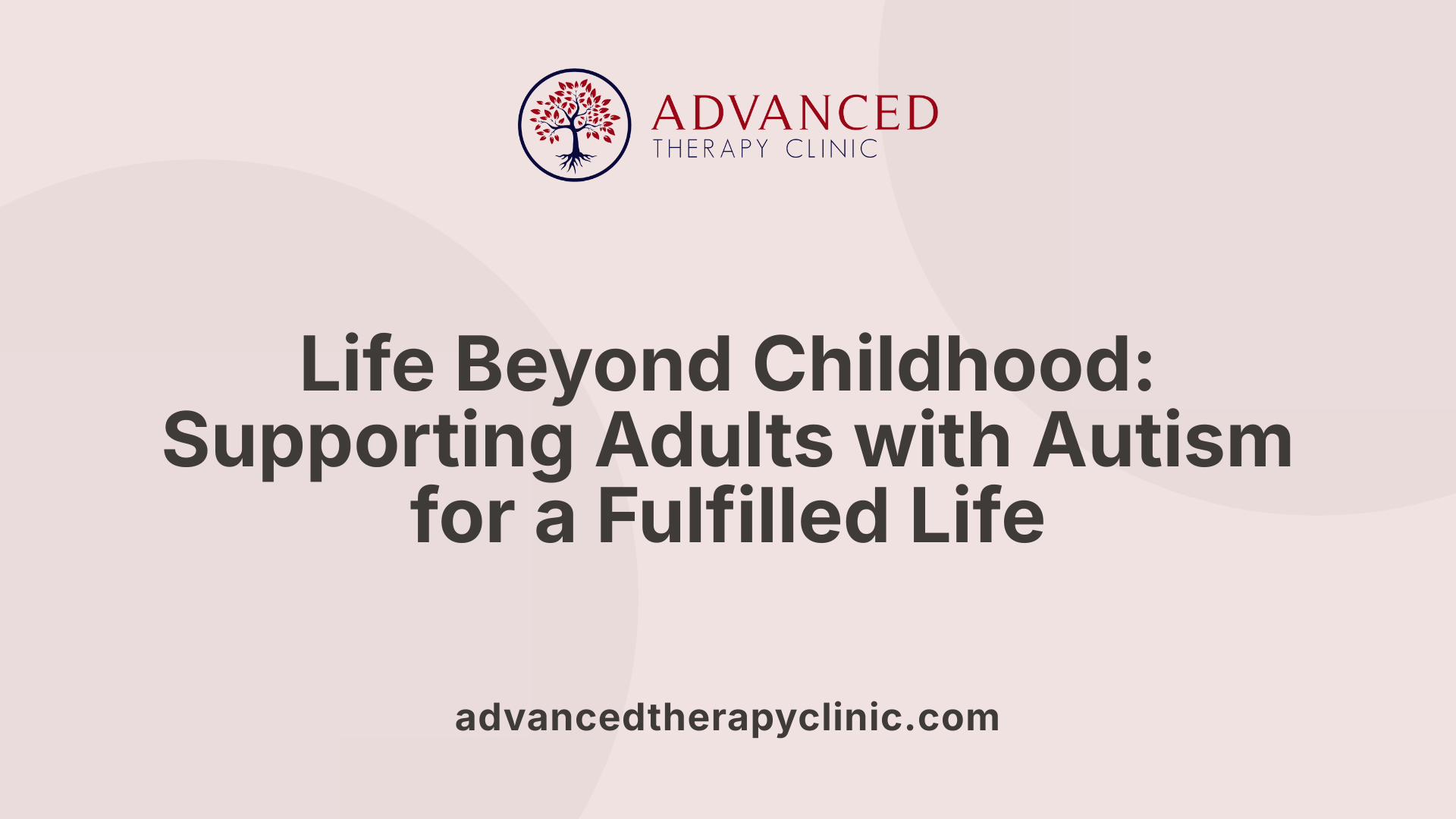
How does lifelong autism impact adult healthcare needs?
Autism is a condition that persists throughout a person’s life, influencing many aspects of healthcare into adulthood. Adults with autism often face the challenge of managing co-occurring health issues like epilepsy, sleep disturbances, digestive problems, and mental health conditions such as anxiety and depression. Transitioning from pediatric to adult healthcare requires careful planning and awareness of legal rights, including understanding options like guardianship or supported decision-making.
Many autistic adults present differently than children, which can affect diagnosis and treatment. Healthcare providers trained specifically in autism are essential for personalized care. Such providers can better understand the unique presentation of symptoms and tailor interventions accordingly.
Access to comprehensive medical care, behavioral therapies, and social support systems greatly enhances quality of life and health outcomes. Routine health screenings may require adaptations to communication styles, sensory sensitivities, and treatment approaches to ensure effective and respectful care.
What considerations are important for employment and independence?
For autistic adults, achieving employment and independence involves developing a range of skills, including daily living, social interaction, and community navigation. Building these skills often begins early, with a focus on self-management, organizational abilities, and decision-making.
Creating structured routines and setting specific, measurable goals (SMART goals) can facilitate personal progress. Positive reinforcement and respectful feedback help reinforce growth and confidence.
Support programs like Itineris and others tailored to individual strengths provide essential opportunities for gaining work experience. Workplace accommodations—such as quiet workspaces, flexible hours, and clear communication—are vital for enabling successful employment.
Understanding and addressing sensory sensitivities, social norms, and communication challenges support inclusive environments. These supports help autistic adults achieve greater independence in everyday activities, including managing finances, transportation, and healthcare.
What are the challenges in adult life, such as housing and relationships?
Adults on the autism spectrum often face significant hurdles in securing stable housing and forming personal relationships. Many live with family into adulthood due to difficulties in independent living, which can stem from challenges with daily life skills, employment, or lack of resources.
Forming romantic or social relationships can be particularly complex. Social skills challenges, sensory sensitivities, and societal expectations may hinder relationship development. Masking behaviors—adapting one's behaviors to fit social norms—are common but can lead to increased stress and mental health issues.
Navigating disclosure in employment or healthcare settings is another challenge, as some may fear judgment or discrimination. Community resources, inclusive social groups, and targeted education are vital in fostering better social integration.
Efforts aimed at improving self-advocacy, providing social skills training, and increasing awareness can support autistic adults in achieving a more satisfying and independent life. Access to housing programs, supported living arrangements, and relationship counseling further enhance their capacity for a fulfilling personal life.
Empowering Autistic Young Adults for a Fuller Life
Understanding the unique signs, challenges, and strengths of young adults on the autism spectrum is essential for fostering a society that provides equitable opportunities for education, employment, and social connection. Bridging the support gaps, especially during the critical transition from adolescence to adulthood, requires collaborative efforts among families, educators, healthcare providers, and communities. With tailored interventions, supportive environments, and greater awareness, autistic young adults can thrive, contributing richly to their communities and achieving personal fulfillment.
References
- Autism Spectrum Disorder in Teenagers and Adults - CDC
- Autism: The Transition to Adulthood - Yale Medicine
- Signs of autism in adults - NHS
- Young Adults (18-21) - Autism Speaks
- Coming of Age: What Awaits Young Adults With Autism?
- Signs that a child or adult may be autistic
- More women, young adults being diagnosed with autism
- Signs of autism in adults
- Autism: The challenges and opportunities of an adult diagnosis
Recent articles
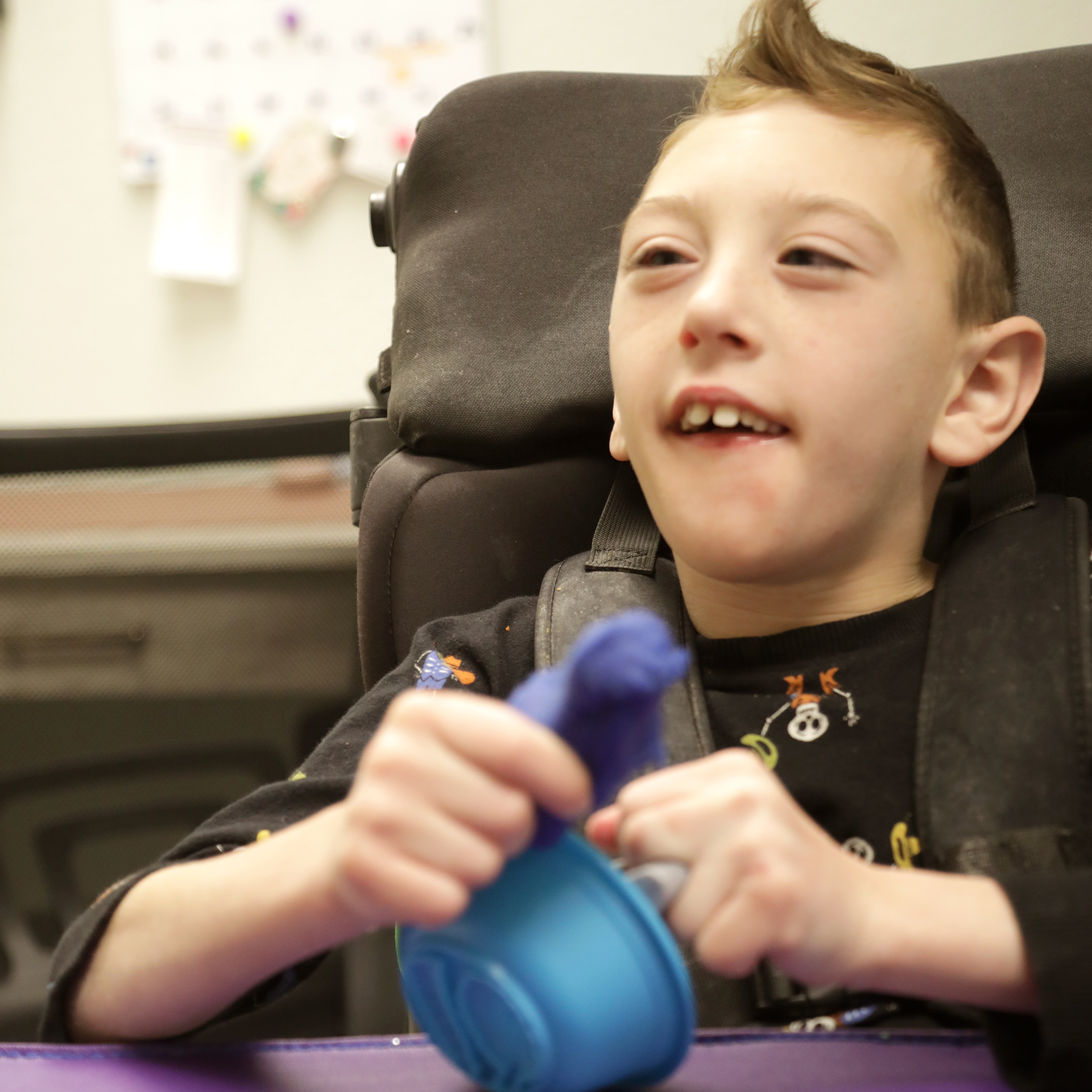
How Pediatric Therapy Helps Kids Thrive across Montana and Wyoming
A supportive guide for families exploring therapy options in Billings, Butte, Missoula or Sheridan.

How to Choose the Right Pediatric Therapy Clinic in Billings, Montana
A Parent‑Friendly Guide To Finding The Best Support For Your Child

Expressive Speech Delay 2-Year-Old
Understanding and Addressing Expressive Speech Delay in Toddlers

How Speech Recognition Works
Unlocking the Power of Speech Recognition in Therapy and Healthcare

Autism and Head Size
Understanding the Complex Relationship Between Autism and Head Size

Occupational Therapy in Autism
Enhancing Independence and Quality of Life Through Occupational Therapy in Autism

